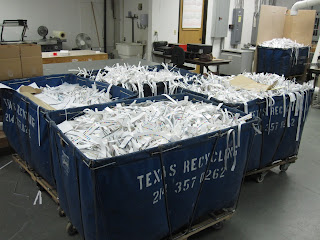Integral to the design of all documents that are read is the choice of a typeface or font.
It really is the "face" of a document.
First of all, what is a typeface or font? Actually, they are two different terms. A typeface, as defined by Wikipedia, "...is a set of one or more fonts, in one or more sizes, stylistically similar...compris(ed) of a set letters, numbers and punctuation marks..."
A font is, since the advent of computer technology, a single style of letter (to paraphrase Wikipedia).
So, fonts are a part of typography.
What does this mean to you?
Well, as a consumer or business owner, you can help shape your brand and look of your company. A certain typeface tells a story about you--from serious to playful to what your company does.
Setting type together with color, lines, shapes and photographs will define your collateral materials as well as your webpage. Be sure to be consistent and use the same faces in similar situations.
A qualified designer can take the concepts of your company and interpret them into these forms and shapes just as a qualified writer would tell your story in print or in a speech. Whether it is a PowerPoint presentation, a printed brochure or your webpage, what is written, both as a content and as viewed, is powerful to the reader's brain as well as their eyes.
The Executive
 In preparing that new brochure or other printed item for your marketing efforts, consider the following simple points:
In preparing that new brochure or other printed item for your marketing efforts, consider the following simple points:























